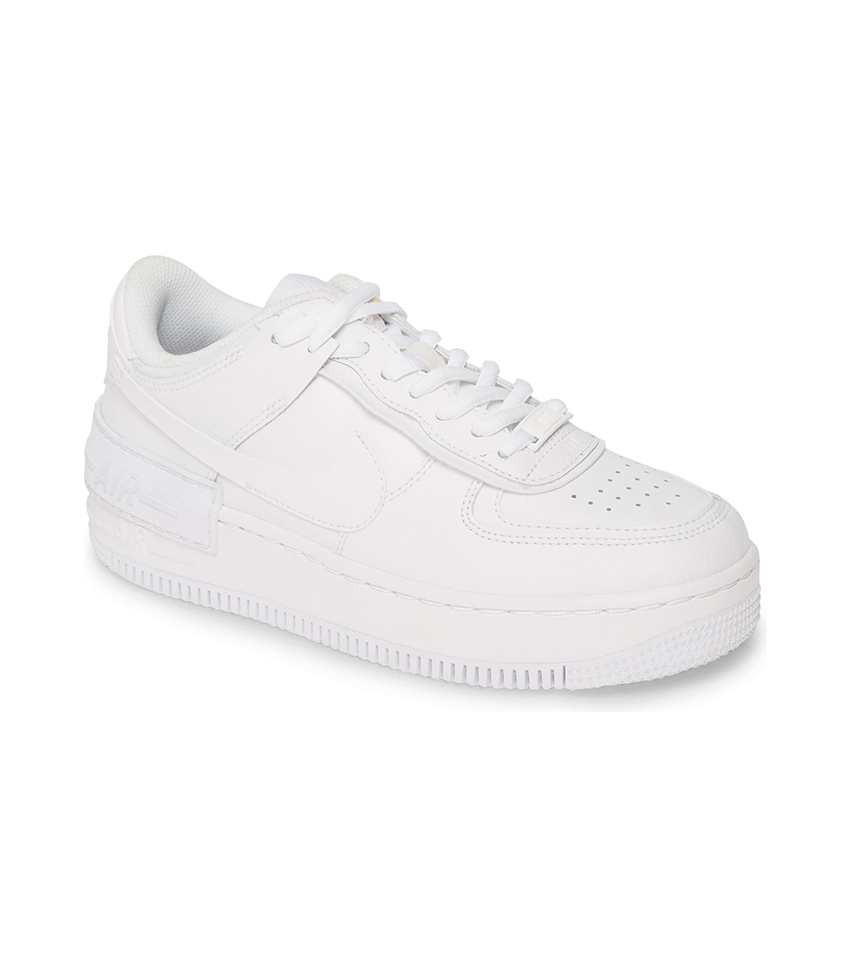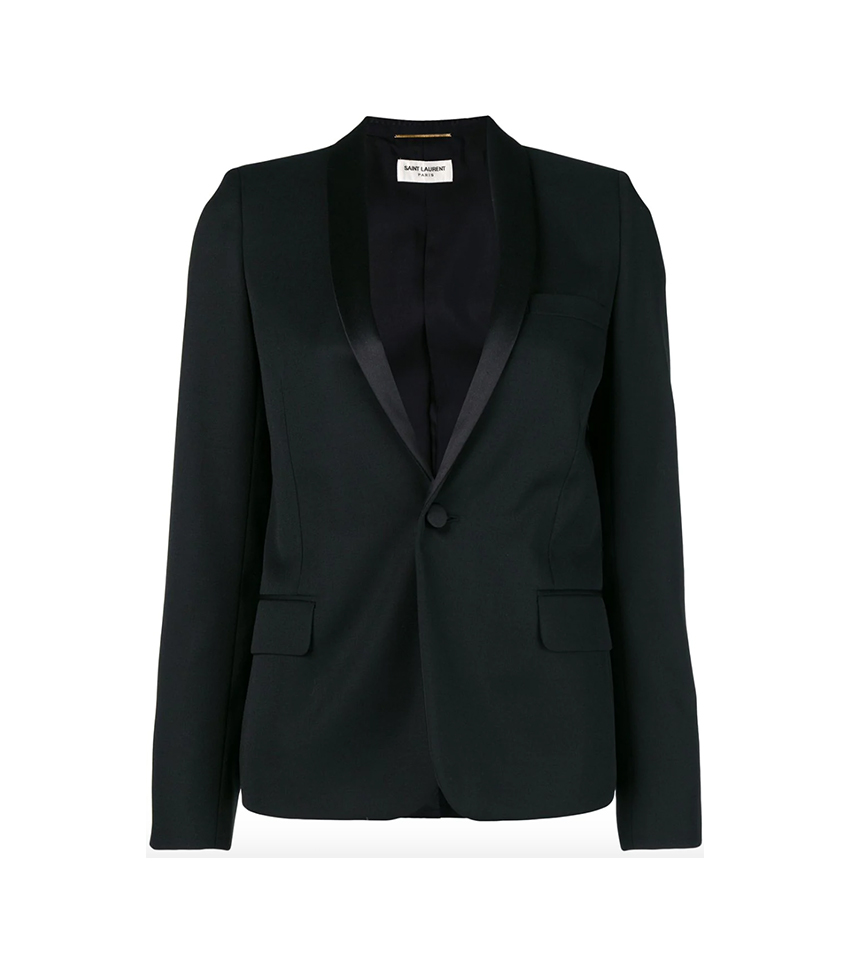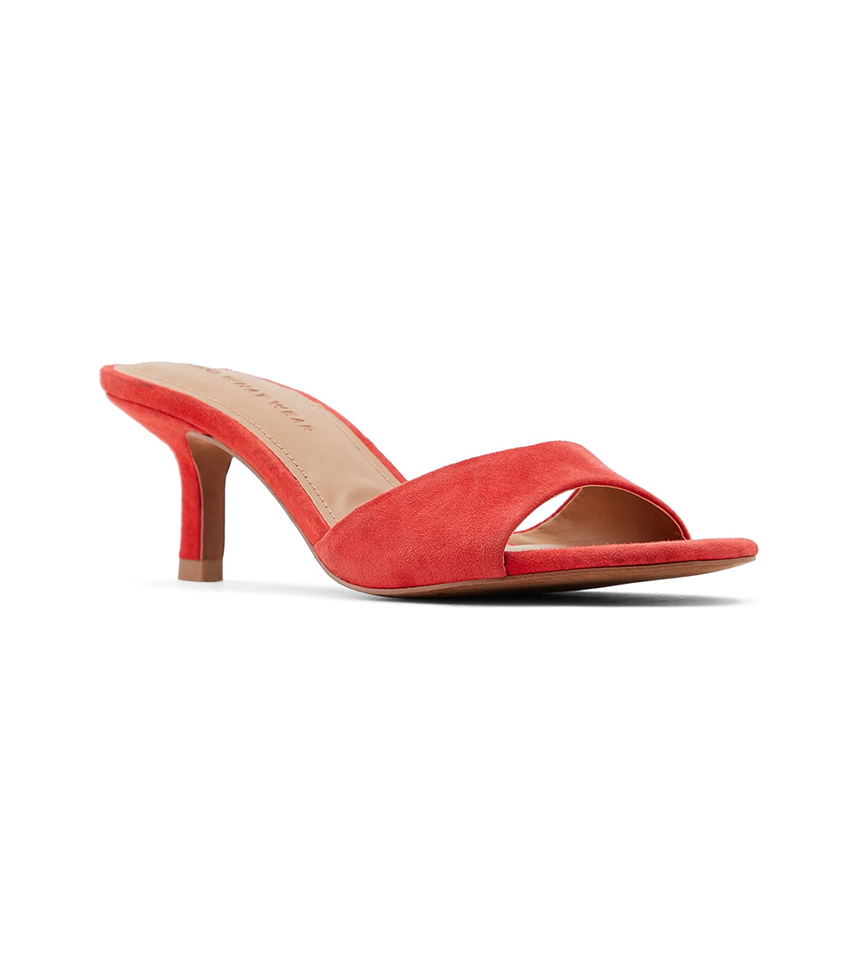Angelica Ross on "Passing," Pose, and Her Approach to Style


Some time ago, in a Who What Wear edit meeting, long before the days of working from home, we sat down IRL to brainstorm how to cover Women’s History Month. More specifically, we pondered how to share the stories of transgender women—how their identity impacts their relationship with both the month and fashion. And while the month has passed and the world has changed since then, what hasn’t changed is the importance of speaking to the issues trans women face. It wasn’t until I attended the Embrace Ambition Summit a few weeks after that meeting and spotted Angelica Ross in a two-tone silk wrap Tory Burch dress onstage that I knew how this idea could come to fruition.
Ross’s whole career has been about advocating for trans women on-screen, in tech, and in fashion. So after I walked away that day, I knew it was necessary to share stories like hers not just for one month of the year but all the time, for all of the women finding their place in the world no matter what gender they were assigned at birth. Keep reading to hear from Ross on everything from starring in Pose to founding a nonprofit and, of course, her approach to style.

I was blown away hearing your story at the Embrace Ambition summit, but for those who aren’t familiar with how you became an actress, can you share a little bit of your story? What drew you to acting?
I’ve been acting ever since I was a kid. I think at first, it was the costumes, makeup, and role-playing. Even in class when we were reading a book, I loved getting the parts with a lot of reading. I would practice my articulation and comprehension in real time, which became useful in auditions that were complete cold readings.

You’ve starred both in American Horror Story and Pose. Can you tell us a little bit about your experience on those shows?
For both experiences, I went in with my eyes and ears wide open. Ryan Murphy hires a lot of talented people in front of and behind the camera, so my default position was to learn as much as I could from as many people as I could. On the set of Pose, I took notes often from Billy Porter and also challenged him to a fierce tennis match in some of our scenes where the banter back and forth was pure improv magic between us. Most of the time, when I’m not on camera, I can still be found on set watching at a monitor, sitting near the directors and producers, and watching them work. I found the same level of expertise on the set of American Horror Story. I learned so much from Emma Roberts, Billie Lourd, and Cody Fern, who I spent most of my time filming scenes with.
Why is it important for younger generations to see transgender women in media?
I was terrified of who I was. Everything I learned and everything I saw about queer and trans people was negative. The message was clear that living life openly as a gay or trans person was choosing death. However, the representation of trans folks in the media in the past few years has given young trans people enough hope and inspiration to know that choosing themselves is literally how you "get ya life darling.”

You’ve not only starred in shows and campaigns, but you also founded TransTech Social Enterprises. Can you tell us a little about why you felt the need to start this organization?
I worked for a nonprofit in 2012 and was tasked with developing an employment program to address the specific needs of trans people and trans people of color who were facing homelessness, incarceration histories, and newly diagnosed with HIV. I quickly found that I was being tokenized and asked to be the face of a program that was underserving and underestimating the trans community by saying that teaching tech skills was over the head of the population we served. I eventually quit that job to start TransTech because I believe that no matter your ability, technology can be a catalyst for change in your career and your life.

Some trans women are not afforded the privilege of passing in society, and they often struggle with dressing for their body types. Can you tell us your perspective on this?
What we now know as trans women is that we are not trying to "pass”; we are just trying to survive with our lives and our dignity intact. We get caught up in the same struggles that every woman faces, trying to fit our bodies into a box it was never meant to fit into. Instead, we learn to highlight our best features and contour for the gods.
Unfortunately, we live in a world that is transphobic, and many trans women struggle with passing that directly impacts how they’re treated. For our cisgender sisters, what advice, if any, would you give to be true allies to trans women?
Many women don’t realize how we’ve internalized misogyny and the patriarchy. We uphold these toxic norms by comparing and qualifying our womanhood so that we feel like we too "pass.” Our cis sisters can learn the term "cis-assuming privilege” and further the discussion on what harmful assumptions we make about ourselves and other women that hinder our progress in the movement for equal rights for all women.

Tell us a little about how your campaign with Louis Vuitton Pre-Fall 2020 came to be. And why is a campaign like that important, in your opinion?
My publicist emailed to let me know that Louis Vuitton was interested in me participating in their next campaign alongside Emma Roberts, Cody Fern, and Billie Lourd from the American Horror Story: 1984 cast. I was super excited because from the start I felt like I was being included because of my body of work, not for my trans body. And I immediately had the sense that I was walking into a brand that had a history of inclusion, especially at the intersection of me also being a dark-skin black woman. I knew to collaborate with Louis Vuitton I would be adding to the narrative already in progress that black and trans is beautiful. I brought all of my blackness and my transness to the shoot. I don’t identify as gender-neutral, but I do feed my masculine and feminine side through fashion, and in this shoot, I was certainly channeling fluidity.
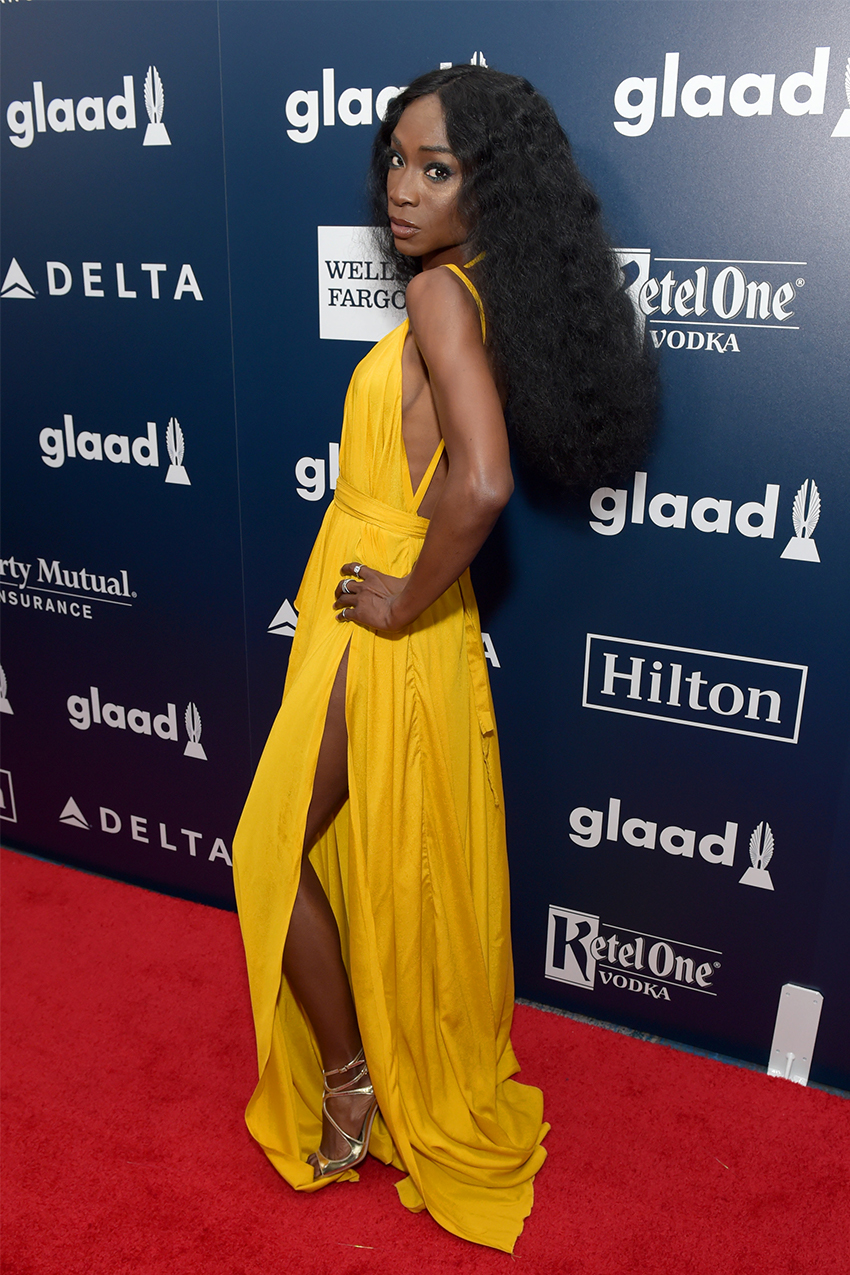
For many, style is frivolous and not serious. What would you say to anyone who doubts the importance of style in how it relates to gender expression?
You only get one chance to make a first impression. Whether you are meeting the future love of your life or your employer, fashion has the power to communicate who you are, and you don’t have to break the bank or mop Macy’s to do it. That is why for many of my talks that are in front of trans audiences, my style inspiration is "clean.” That can be a pair of jeans, a button-down shirt, sneakers, and a hoodie, or it can be a plain navy blue dress, a pearl necklace, and matching earrings that not only say clean but also say, "I know who I am.”
Shop some of the pieces Ross has mentioned:

Do you use style as a way to empower yourself and others? And if so, what do you want your personal style to say to the world?
My style exudes confidence, not from the price tag or the label but from how I wear it. I have spent a lifetime baring my soul. Now everything else becomes an accessory, a way to kindle and adorn beauty that is already there. Wearing headwraps is one of the ways I do this most often. Being able to take a piece of fabric or scarf laying around, wrap it around my kinky coif, and head out the door says I don’t need to fuss with my hair when I have cheekbones and lipgloss.
Along your journey, did you struggle with dressing for your body type? Do you have any style tips or lessons you’ve learned along the way that you can share?
I have struggled my entire journey to dress for my body type. I have been labeled "too skinny” and not having enough curves, very similar to Candy Ferocity, the character I play on Pose. So before I resorted to implants, I used various shapewear. From removable silicone breast enhancers to hip pads made out of couch foam, I used whatever tricks I could to help me bring the woman in me out of her shell.
Shop some of the pieces Ross has mentioned:

How has your identity and experience impacted the way you approach your personal style?
I’m no longer confined by what is considered to be masculine or feminine. One of my favorite shoots was for V Magazine where I’m wearing a Saint Laurent suit sitting in a relaxed IDGAF mood. When I’m glamming up for various events and red carpets, I don’t really stress anymore about what I’m going to wear because I know whatever it is, my personality will come to bring it to you every time.
Re-create Ross's suit look:
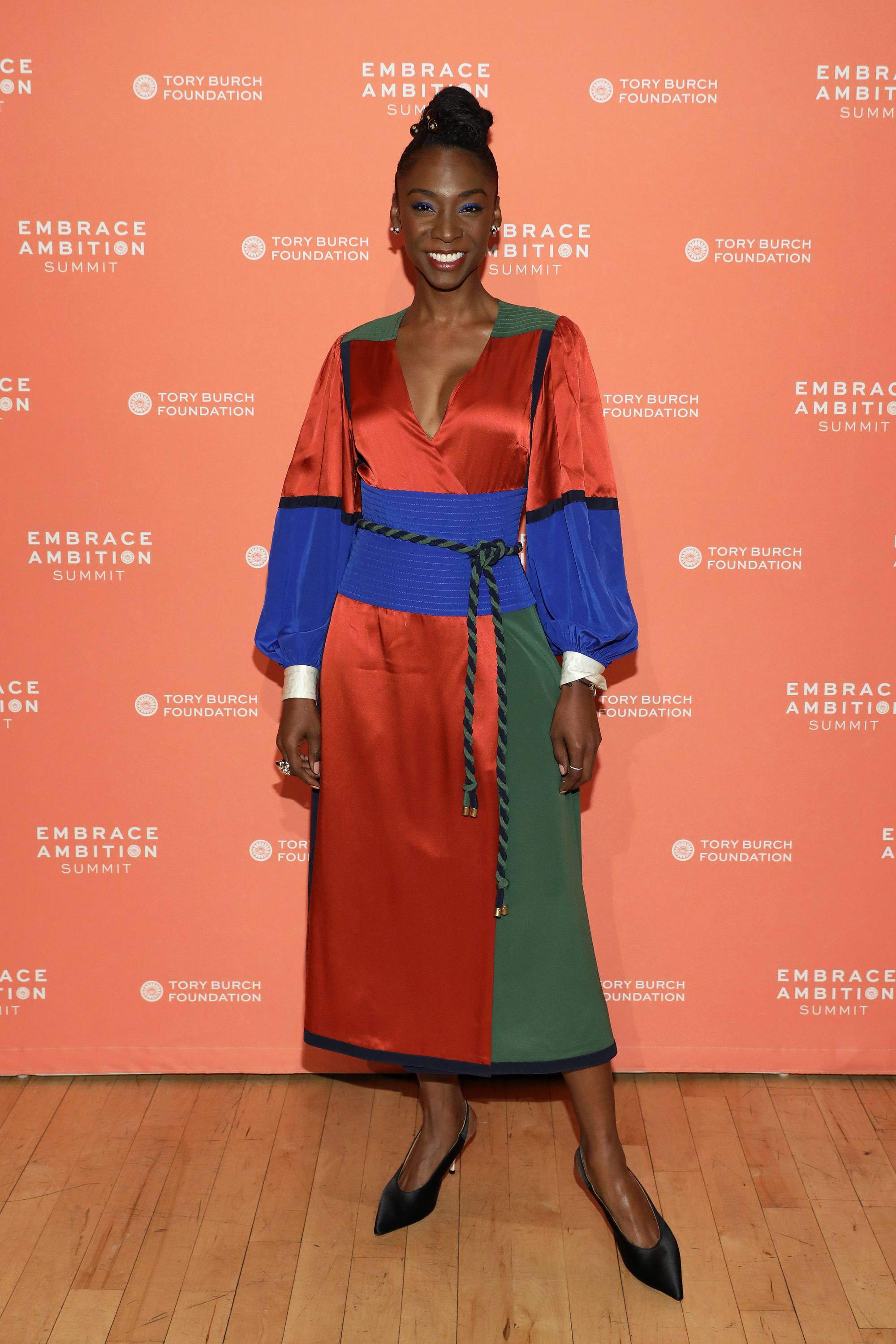
Are there any places you love to shop or brands you have worn throughout your transition?
Early in my transition, you couldn’t keep me out of Bebe. That was partially because I worked for them and made full use of the employee discount but also because I loved to accentuate my silhouette with pencil skirts, formfitting sweaters, and blouses and to finish off my look with high heels and jewelry. And of course, I love Louis Vuitton now that I’ve got the hookup!
And finally, what’s the one piece of advice you wish someone would have given you on your journey?
Take your time.
Shop more pieces inspired by Ross's style:
Next: Talking Style, Representation, and Refugees on Screen With Halima Aden

Jasmine Fox-Suliaman is a freelance writer and editor living in New York City. What began as a pastime (blogging on Tumblr) transformed into a lifelong passion for unveiling the connection between fashion and culture on the internet and in real life. Over the last decade, she's melded her extensive edit and social background to various on-staff positions at Who What Wear, MyDomaine, and Byrdie. More recently, she’s become a freelance contributor to other publications including Vogue, Editorialist, and The Cut. Off the clock, you can find her clutching her cell phone as she's constantly scrolling through TikTok and The RealReal, in search of the next cool thing.
-
 Brittany Snow Is Reclaiming Her Power One Project and Red Carpet Look at a Time
Brittany Snow Is Reclaiming Her Power One Project and Red Carpet Look at a TimeWe're here for the actress's 2025 renaissance.
-
 Abby Elliott Brings Romanticism to the Forefront With Rodarte Premiere Look
Abby Elliott Brings Romanticism to the Forefront With Rodarte Premiere LookA peek inside the All Her Fault and The Bear star's getting-ready suite.
-
 Sarah Snook's New Bag Is So Shiv Roy If She Moved to L.A. and Started a Substack
Sarah Snook's New Bag Is So Shiv Roy If She Moved to L.A. and Started a SubstackI'm having Succession withdrawals.
-
 More Jackie Tohn, Please!
More Jackie Tohn, Please!The Nobody Wants This actress is season 2's standout.
-
 Lydia Peckham's Nuremberg Premiere Look Is a Love Letter to Old Hollywood
Lydia Peckham's Nuremberg Premiere Look Is a Love Letter to Old HollywoodThe actress shares her exclusive getting-ready photo diary.
-
 Elegant Dressers Are Replacing Their Black Skirts With This Rich Color Alternative
Elegant Dressers Are Replacing Their Black Skirts With This Rich Color AlternativeAs seen on Tessa Thompson and in Tory Burch's S/S 26 collection.
-
 Not Even Suzanna Son Knows If Her Monster Character Is Real or Not
Not Even Suzanna Son Knows If Her Monster Character Is Real or NotThe Ed Gein Story actress talks about her mysterious role.
-
 Anna Van Patten on Becoming the Actress She Was Always Meant to Be
Anna Van Patten on Becoming the Actress She Was Always Meant to BeFrom her role in The Twisted Tale of Amanda Knox to her part in the upcoming season of Euphoria, Anna Van Patten is steadily making a name for herself in Hollywood.


